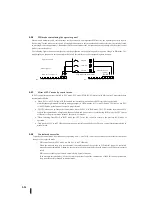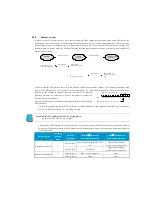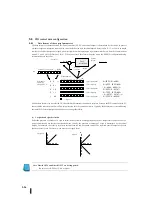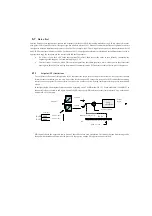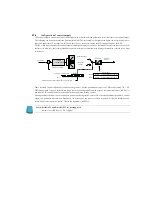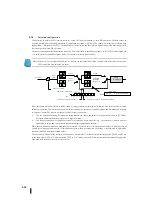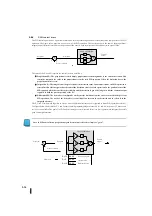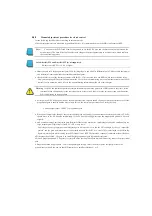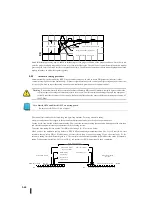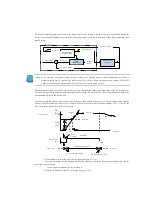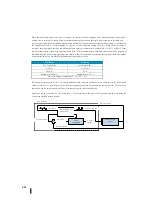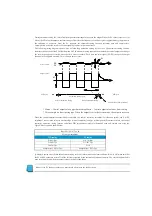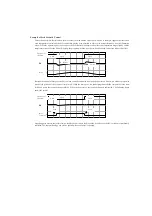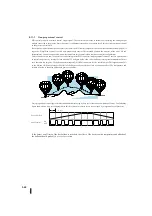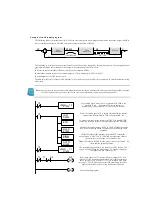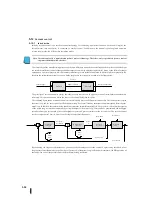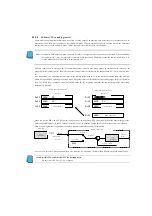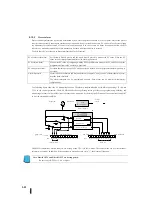
5-38
5-9
PID control tuning procedure
This is probably the most important step in closed-loop process controls. The purpose of the control tuning is to adjust the control
gain so that the loop achieves optimal performance under various conditions. Generally, the quality of control performance is
determined by how well the PV follows the SP after the SP change.
Automatic and manual tuning direct (manual tuning) PID gain values may be changed, or a CPU PID processing engine (automatic
tuning) may be used to automatically calculate gain. Automatic tuning is easier to calculate gains than manual tuning. Automatic
tuning enables you to obtain the most appropriate gain. In addition, fine tuning with manual tuning provides the best gain value.
Warning
Changing the constant obtained with the control tuning should be done by a person familiar with the process.
Automatic tuning in a process where the control output value changes dramatically affects the process. In order to
minimize damage to people and equipment, carefully consider the impact of any change. Be knowledgeable about
the process before performing auto-tuning of the SJ-Ether.
5-9-1
Open-loop test
Whether using manual or automatic tuning, it is very important to confirm the basic characteristics of the newly installed
process before tuning. When the control is in manual mode, check the following items for new rule control.
Set point: Check that the source data that generates the set point is correct. Set PLC to RUN mode. Keep control in
manual mode. Monitor the R+02 of the control table position and see the SP value. Also check the lamp/soak
generator (if used).
Process Variables: The PV value enters R+03 of the control table position. Monitor here to ensure that the correct
measurements are available. If the PV signal appears to be very variable, consider passing through hardware (RC
low pass filter) or filtering the input using a digital S/W filter.
CONTROL OUTPUT: If the following operations are possible (safe), manually change the output slightly (about
10%) and examine the effect of the process variable. Check whether the process is direct or reverse and check the
setting of the control output (inverter or not). Make sure that the upper and lower limits of the control output are
not the same.
Sample Rate: While working with an open loop, you can find the ideal sample rate (the procedure is described
earlier in this chapter). If automatic tuning is used, however, the PID gain is obtained by automatic tuning and the
sample rate is automatically calculated.
The explanation starting on the next page covers the manual tuning procedure. If you wish to perform only automatic tuning,
skip the next section and proceed directly to the automatic tuning section.
Summary of Contents for Kostac SJ-Ether Series
Page 1: ...English version of the KOSTAC SJ Ether series user s manual SJ ETHER USER M...
Page 12: ......
Page 13: ...1...
Page 14: ......
Page 88: ......
Page 89: ......
Page 113: ...3 24 Note Refer to 6 3 3 Module Assembly for connections and locks between modules...
Page 153: ......
Page 156: ...flashing OFF Not sent H W RX Green flashing Receiving H W OFF Not received H W...
Page 161: ...4 8...
Page 221: ......
Page 310: ...Chapter 7 Maintenance...
Page 311: ......

